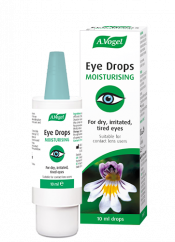What are the signs of eye strain?
Thanks to the rise of computers, smartphones and tablets, eye strain is becoming an increasingly common problem. It’s estimated that 6 out 10 adults spend more than 5 hours on digital devices each day.1 This can result in a serious case of eye strain and I’m sure you will be familiar with at least some of the symptoms:
- Blurred vision
- Sore, tired eyes
- Increased sensitivity to eyes
Some of the other symptoms of eye strain can be more surprising, such as difficulty concentrating or painful headaches. It’s not unheard of to experience some tension around the neck, back and shoulders too as the result of poor posture.
Unsurprisingly this can cause problems, particularly if your job revolves around the use of computers. You probably don’t want to give up your job for the sake of eye strain but, in some cases, the symptoms can become very debilitating and uncomfortable to experience on a daily basis. That’s why I’m going to talk you through some useful tips to help you minimise these unpleasant side effects!
1https://www.enhancedvision.com/low-vision-info/screens-eye-strain-and-sleep.html
How to get rid of eye strain
The good news is that it is possible to reduce the symptoms of eye strain and there are a number of self-help methods that are at your disposal, in addition to herbal and conventional medicines. A good general tip, in addition to the points below, would be to keep well hydrated at all times and drink plenty fluids – dehydration, unsurprisingly, is not good for your eyes, especially if they are already dry and prone to irritation!
1 - Eye exercises
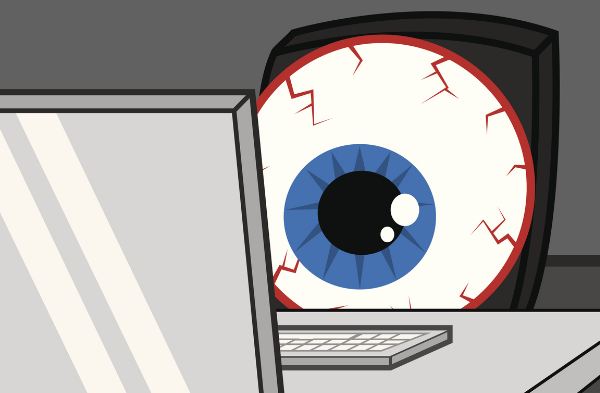
Exercising your eyes may sound a little bizarre but trust me, this method is extremely effective and easy to incorporate into your daily routine, especially if you spend a lot of time working with computers. My favourite exercise is probably the 20-20-20 rule which I have talked about previously. This exercise should be carried out every 20 minutes to reap the full benefits.
Start by refocusing your eyes on something at least 20 feet away for around 20 seconds. This provides your eyes with a break away from your computer screen and should allow them to relax, preventing the onset of eye strain and conditions such as Computer Vision Syndrome.
2 – Eat for your eyes

Support your eyes by making sure they get all the nutrients they need to be strong and healthy. Vitamin A, vitamin C, omega fatty acids and carotenoids are pretty important when it comes to eye health so I would try to increase your intake of foods that are rich in these nutrients. This means eating plenty of brightly coloured fruit and veg, leafy greens, oily fish and seeds and nuts.
Here are a few of my favourite recipes that you may want to try at home:
Spinach & Potato Curry
Spicy Tomato & Red Lentil Soup
Creamy Beetroot & Radish Soup
Grilled Honey Lemon Sardines with Herbed Rice
Purple fruits and veg are particularly good for your eyes as they’re often a rich source of carotenoids, which can help to protect your eyes from sunlight and improve your eyesight! Biotta’s Purple Carrot Juice is prepared using 100% organic purple carrots and contains up to 28 times more anthocyanins than orange carrots!
For more information about the benefits of purple carrot juice for eye health, please check out our nutritionist, Emma’s, article on the subject.
3 – Protect your eyes properly

It’s amazing how many people don’t bother to arrange regular check-ups with their optician and, because of this, many of you could in fact be suffering from some sort of eye problem without even realising it. It’s extremely important to get your vision checked regularly so you know whether or not you should be wearing glasses.
This brings me on to my next point – sunglasses. Sitting in front of a computer all day isn’t the only way to get eye strain. Repeated exposure to sunlight and UV radiation can also affect your eyes, making them drier and infinitely more irritable. As I mentioned in my article ‘The importance of sunglasses’ this exposure can result in macular degeneration so if it’s sunny outside, make sure your eyes are protected.
4 – Get plenty of shut-eye

Sleep is incredibly important for a number of biological functions, including your eyes. When you sleep at night, it gives your body time to do some serious maintenance work and, if you aren’t sleeping properly, your body won’t get the opportunity to do the repairs it needs to, resulting in low immune function and an increased predisposition towards stress and anxiety.
If you’re not sleeping properly, your eyes aren’t getting the rest they need which can result in sore, tired eyes the following day. Sleep conditions such as insomnia can also prevent your eyes from getting the fluid circulation that they need, making them drier and more prone to irritation. Bloodshot eyes are also commonly associated with sleep deprivation, so getting some shut-eye can make a real difference.
Try to establish a regular sleep pattern and ditch all your devices at least an hour before bed. The blue light emitted from the screen of your tablets, smartphones and computers can affect your production of the sleep hormone melatonin. If you are suffering from sleep problems, you could try our natural, gentle sleep remedy, Dormeasan, which is prepared using extracts of Valerian and Hops.
5 – Massage your eyes
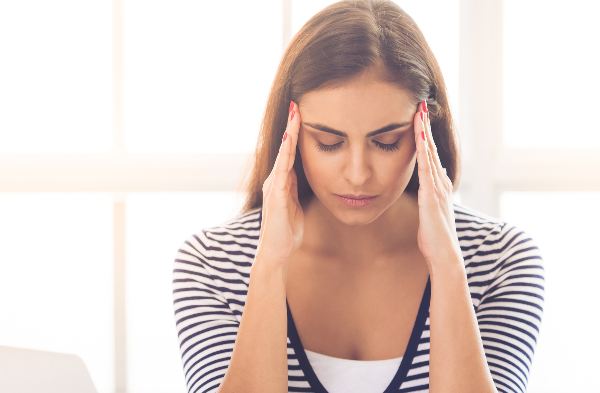
This probably sounds a bit strange but stick with me on this one. Massaging your eyes can be extremely beneficial for eye strain, increasing the circulation to your eye area. You can start by closing your eyes and using your middle finger to gently massage the eye socket bone and down the bridge of your nose.
Repeat this action 8-10 times and then progress on the pressure points below the inner eyebrows. Count to three and press your temples at the same time then, using your thumbs, gently press the area above the inner corners of your eyes. Repeat this action 5 times.
This is just a quick guide, for more information for a quick and easy eye massage, check out Visian's ICL 5 Step Eye Massage.
6 – Try a warm compress
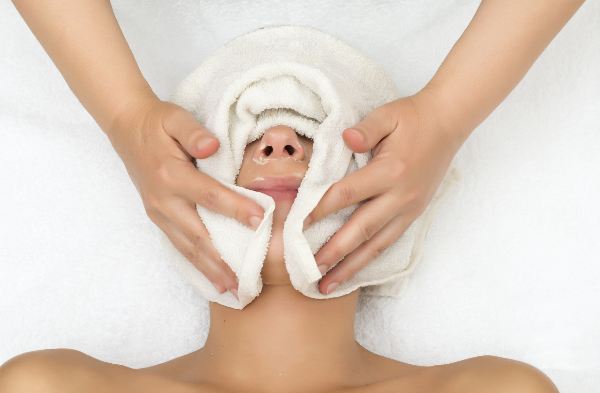
Similar to an eye massage, a warm compress can be a great way of increasing the circulation to your eyes, not mention that it can also ease any pain or spasms. It’s important, though, that you don’t immediately apply a hot towel to your skin as this may potentially cause some damage.
Instead, you can take two approaches by either placing a protective layer of fabric between the compress and your skin or, alternatively, you could soak your towel in warm, not hot, water and gently apply.2
I wouldn’t recommend using conventional hot packs as these are often full of chemicals that could cause some damage to your eyes, not to mention their size often makes them an impractical option.
2https://www.webmd.com/eye-health/tc/warm-compresses-for-eye-problems-topic-overview
7 – Invest in a humidifier
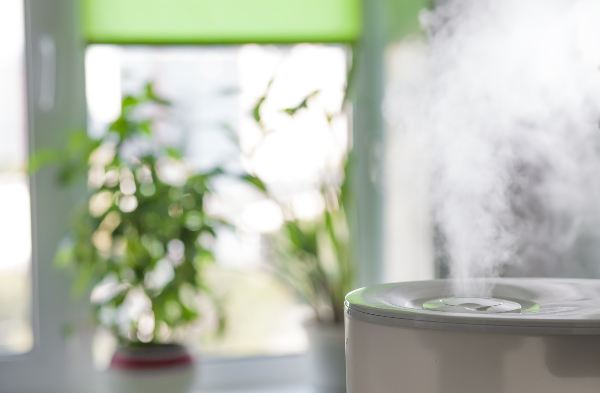
When it comes to winter, most of you will understandably crank up your central heating system to avoid feeling cold and shivery while you work or relax at home. While this might succeed in making you feel nice and cosy, unfortunately the dry air pumping through the room will definitely not have the same effect on your eyes and could potentially deprive them of moisture.
If you suffer from eye strain, this is definitely not good news which is why I’d recommend investing in a humidifier to help get more moisture back into your surrounding environment. A lot of humidifiers are now portable too so you can easily take them to work or to a friend’s so it’s definitely a worthwhile purchase!
8 – Try some rosewater
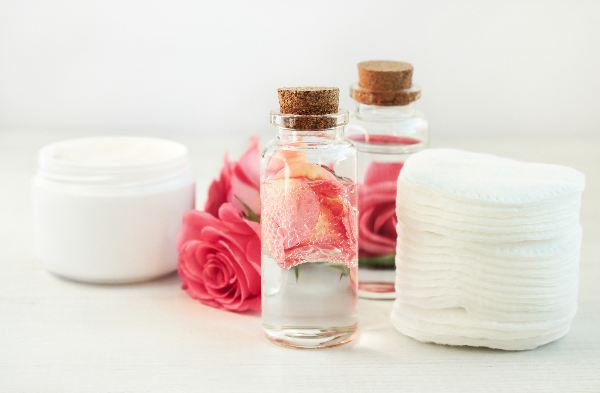
Rosewater is naturally refreshing and relaxing for your eyes, helping to reinvigorate them and combat fatigue. It’s also very nourishing for the delicate skin surrounding your eyes, helping to treat puffiness and dark circles.
I wouldn’t recommend applying rosewater directly to your eyes. Instead, try dipping two cotton balls in rosewater and then place them on top of your eyes. Relax and keep them there for around 15 minutes before removing. This should make your eyes feel more refreshed and energised and ease any lingering discomfort.
Our friends over at Jan de Vries offer a number of excellent rosewater products, such as Natures Aid Rose Water or Pukka’s Rosewater Spray.
9 – Consider your environment
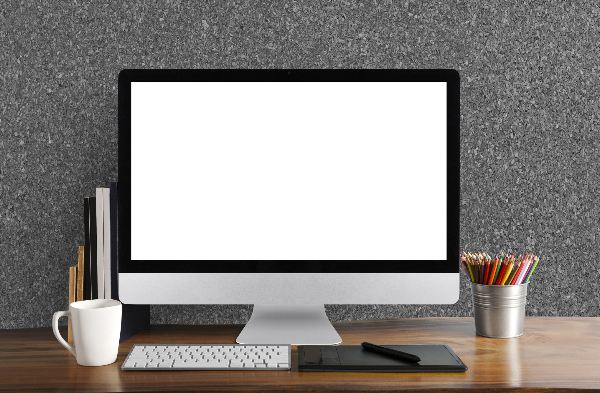
Making sure you have a good working environment can make a real difference to preventing eye strain. Let’s start with your computer – if you’re struggling to see any text, increase the font size. Increase the screen brightness if you have to and make sure it’s positioned at least 45-70cm away from your eyes.
If you can, try to use an anti-glare screen on your computer and make sure the space you’re working in is adequately lit. Adjust your posture so you can sit comfortably without slouching as this may cause some tension in your muscles and increase your chances of developing eye strain.
10 – Try to use eye drops

Eye drops are a great way of getting more moisture back into your eyes, easing any irritation or dryness. I would recommend trying our Eye Drops, which have been specially formulated for dry, irritated or tired eyes.
They contain extracts of hyaluronic acid, which might sound quite abrasive but is actually 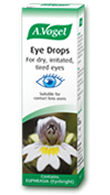 extremely beneficial for your eyes, helping to moisturise the cornea and conjunctiva in a way that mimics your own tears. Our eye drops are also prepared using Euphrasia or ‘Eyebright’, a herb that’s very soothing for the eyes, reducing inflammation.
extremely beneficial for your eyes, helping to moisturise the cornea and conjunctiva in a way that mimics your own tears. Our eye drops are also prepared using Euphrasia or ‘Eyebright’, a herb that’s very soothing for the eyes, reducing inflammation.
Suitable for adults and children over the age of 3, please make sure you don’t share your eye drops with other people to avoid the risk of contracting a contagious infection like conjunctivitis.







